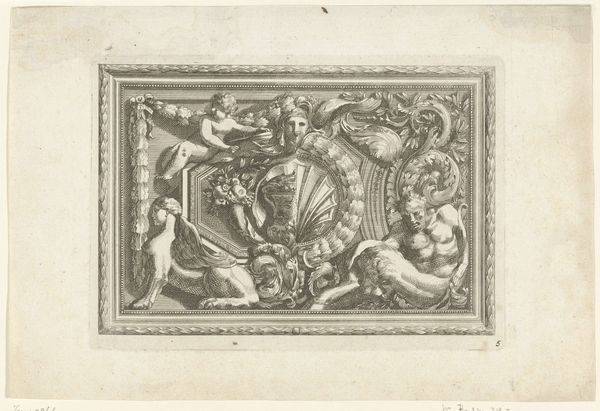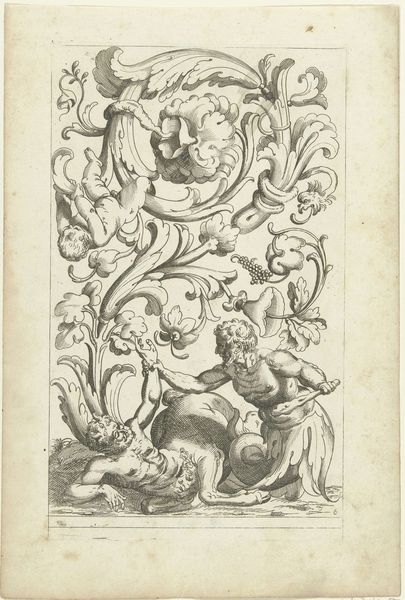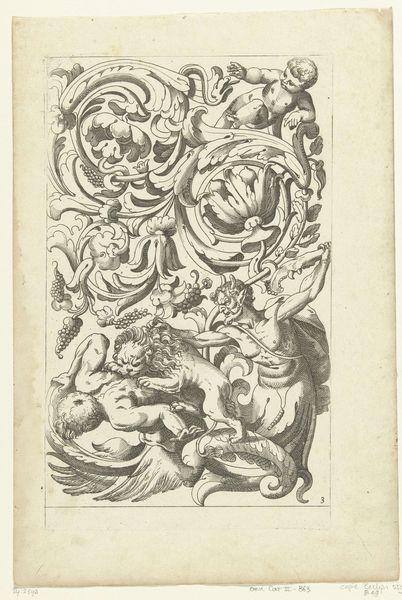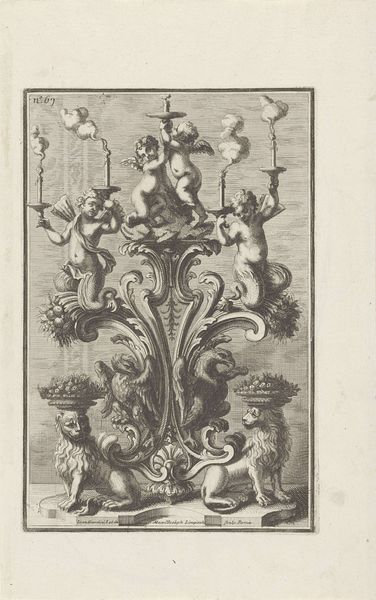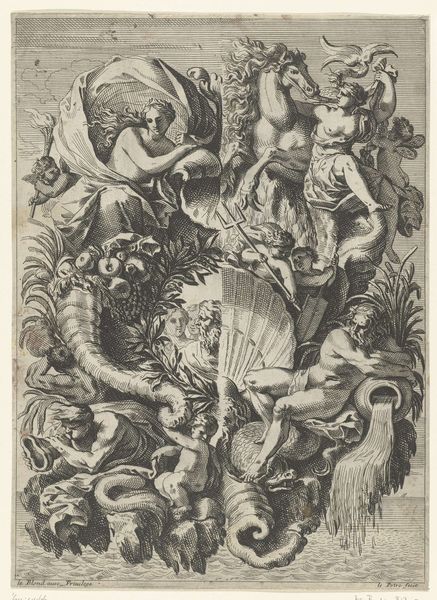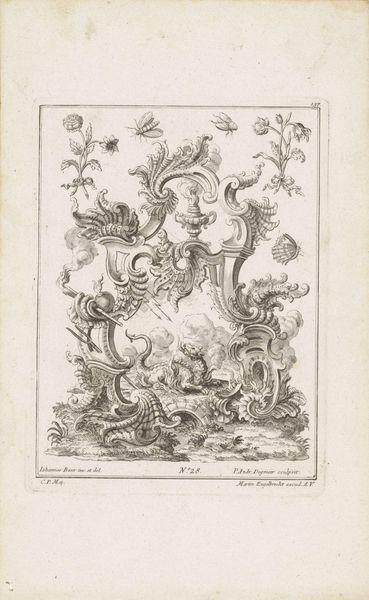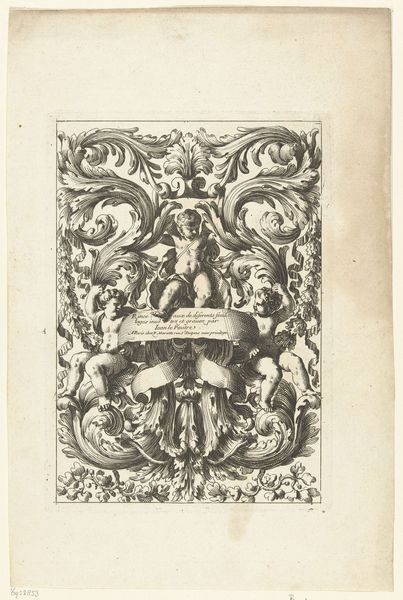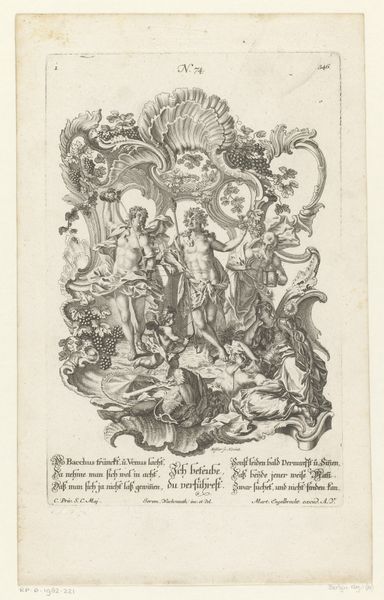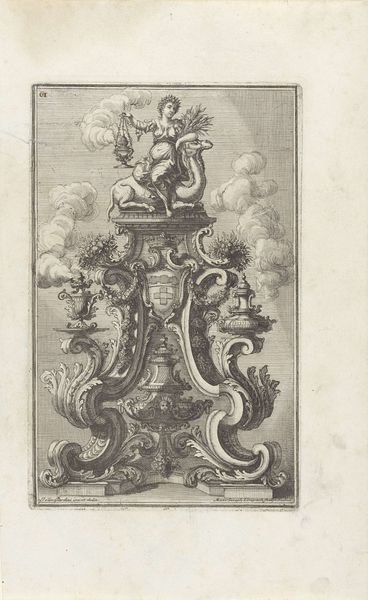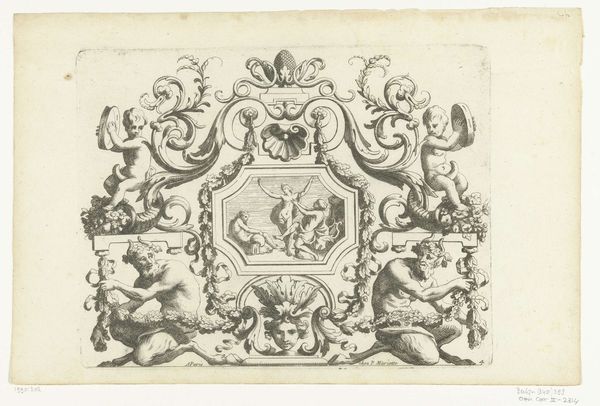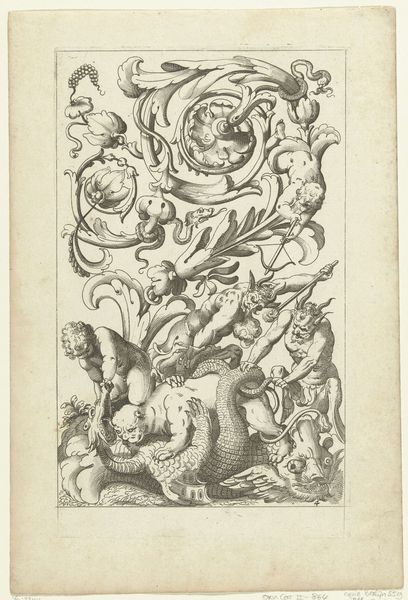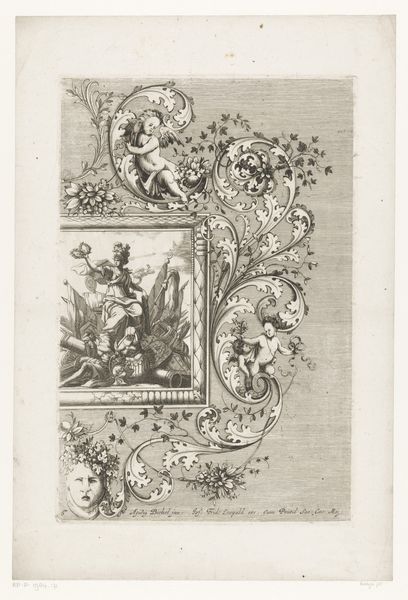
drawing, engraving
#
drawing
#
baroque
#
pen drawing
#
engraving
Dimensions: height 223 mm, width 154 mm
Copyright: Rijks Museum: Open Domain
Curator: We’re looking at "Plafond en cartouche," a drawing and engraving by Jean Lepautre, created circa 1658-1670. It's part of the Rijksmuseum collection. My first impression is how elaborately decorative it is, overflowing with baroque details. Editor: Overflowing is right! My eye is drawn to the sheer density of labor here. All those precisely etched lines must have taken considerable time. Think about the conditions: the artisan, the light available, the tools they had. It’s about materiality and process as much as it is about decoration. Curator: Indeed. These kinds of decorative prints served a clear social purpose. They were not "art" in the sense we think of it today, but models for artisans, ways to spread stylistic trends. Lepautre was a key figure in disseminating French Baroque aesthetics. Editor: Absolutely. The cartouche itself is so interesting – this empty shield awaiting heraldry, the void made potent by all the teeming cherubs and leafy details clinging to it. There’s a kind of tension between potential and realized function. What was its function? Curator: That's a key question. Lepautre’s engravings like this one standardized the visual vocabulary of power and status. Placed in the homes of rising elites or displayed within public spaces they reinforced social hierarchy. The blank cartouche symbolizes inherited status ready to be emblazoned. Editor: And yet, who had access to these images and at what cost? Engravings were inherently reproducible and relatively inexpensive compared to large-scale paintings or sculptures. This artwork feels to me about the dawn of visual media and mass consumption as we know it now. Curator: I find myself contemplating how these engravings shaped popular imagination. Their visual language was absorbed and adapted, solidifying Baroque ideals and propagating French cultural authority across Europe. Editor: Looking closely, the weight and scale feel unreal – this is line work. The cross-hatching generates believable gradients on paper that you can roll up and ship, that a skilled maker can translate into carved relief. Curator: Seeing it through the lens of production definitely enriches our appreciation. The material context highlights how design choices become expressions of social value and cultural power. Editor: Exactly, it’s fascinating to consider both the micro – the artist’s hand, the physical creation, and the macro – societal implications. Curator: Ultimately, this unassuming drawing offers a potent window into 17th-century society. Editor: Agreed, this engraving reminds us art doesn’t emerge in a vacuum. We can analyze it by considering the labor it embodies, the materials at hand, and the hands that used and consumed it.
Comments
No comments
Be the first to comment and join the conversation on the ultimate creative platform.
